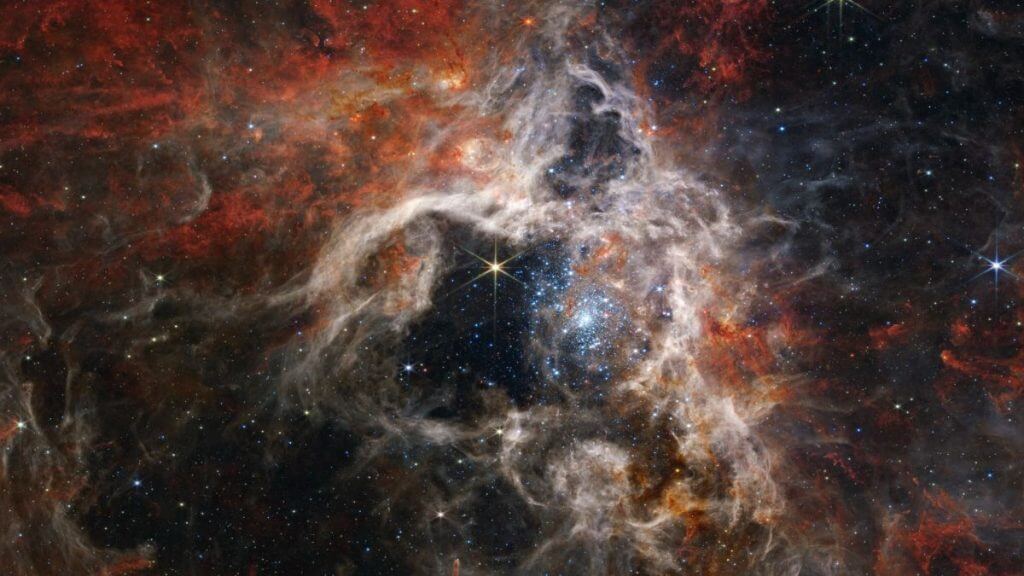The James Webb Space Telescope has delivered a spectacular and unprecedented view of a star-forming region known as the Tarantula Nebula.
A combination of the James Webb Space Telescope’s high-resolution infrared instruments reveal thousands of never-before-seen young stars in the stellar nursery, formally named 30 Doradus.
The incredible new detail picked up by the $10 billion space telescope shows gas and dust in the nebula, as well as distant background galaxies.
Related: NASA’s James Webb Space Telescope mission: Live updates
The superb new detail in the image means Doradus 30, initially nicknamed Tarantula for its spider-like appearance, can now be seen to also resemble a burrowing tarantula’s lair, lined with silk.
The photo is the latest in a series of stunning images released from JWST, which launched on Christmas Day 2021 and released its first pictures in July. Recent images include a perfectly formed “Einstein ring.”
The Tarantula Nebula is located 161,000 light-years away in the Large Magellanic Cloud and is the brightest star-forming region in the galaxies nearest to our Milky Way, collectively known as the Local Group.
(opens in new tab)
The nebula is of special interest to astronomers studying how stars form. The nebula has a similar type of chemical composition as star-forming regions from when the cosmos was only a few billion years old, thus offering a unique insight into how stars formed in the deep cosmic past.
JWST is a collaboration led by NASA with contributions from the European Space Agency and the Canadian Space Agency.
Follow us on Twitter @Spacedotcom (opens in new tab) or on Facebook (opens in new tab).

